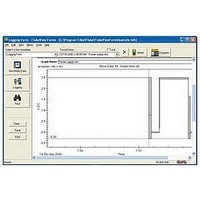FLUKE-FVF-UG Fluke, FLUKE-FVF-UG Datasheet - Page 19

FLUKE-FVF-UG
Manufacturer Part Number
FLUKE-FVF-UG
Description
FlukeView Forms Software Upgrade
Manufacturer
Fluke
Datasheet
1.FLUKE-FVF-SC2.pdf
(36 pages)
Specifications of FLUKE-FVF-UG
For Use With
Fluke DMMs
Lead Free Status / RoHS Status
na
Input events are useful for detecting anomalies in a group
of data, when monitoring a process or when
troubleshooting a problem. Interval events are useful if
the values you record are fairly stable in nature and your
main purpose is documentation for record keeping.
If the values you record are fairly stable, but monitoring
variance from the norm is critical, recording both interval
events and input events can be a valuable trouble-
shooting tool. The interval events serve as routine
documentation, while the input events record any
significant changes that occur during the intervals.
By default, FlukeView Forms logs both input and interval
events. You can view either or both on the form. If you
decide to record only input events or only interval events,
you lose this flexibility, but you reduce the number of
readings you take and save disk space on your PC.
Setting Up Your Logging Session
From the Meter menu, open the Logging Window.
From the Logging Window, set up your logging session
by selecting the Setup tab. You can then customize the
default logging setup to collect your data.
Simulation Graph
Display Simulation Graph lets you view the effects of
changing the logging settings. It shows how an example
input is compressed into events with the current logging
settings. After you change the logging settings and click
the With Setup Data radio button, the Simulation Graph
updates to reflect your changes.
See the FlukeView Forms Technical Notes for a
more comprehensive description of how event
logging is performed and how to effectively use it
for your purposes.
Getting Data from the Meter to the PC
Note
Documenting Software
13














